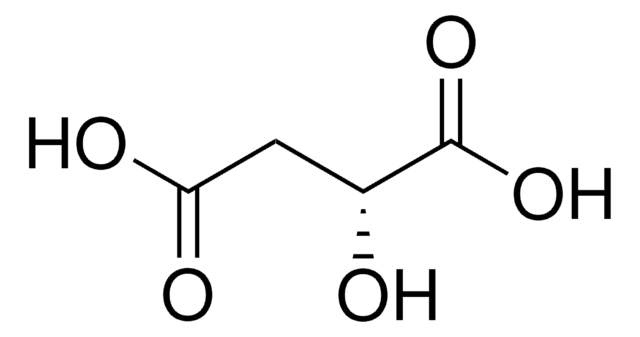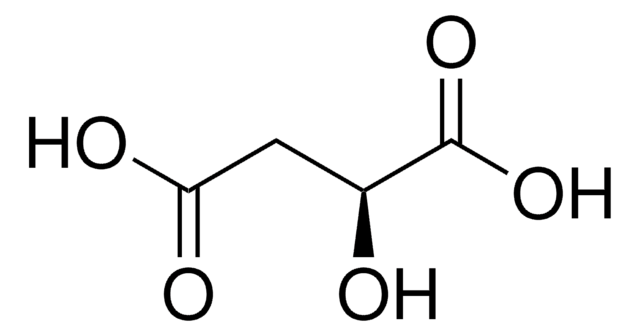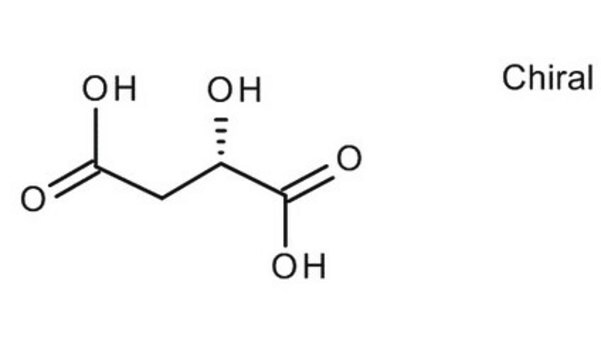46940-U
D-Malic acid
analytical standard
Sinonimo/i:
D-(+)-Malic acid, (R)-(+)-2-Hydroxysuccinic acid, D-Hydroxybutanedioic acid
About This Item
Prodotti consigliati
Grado
analytical standard
Livello qualitativo
CdA
current certificate can be downloaded
Confezionamento
ampule of 100 mg
tecniche
HPLC: suitable
gas chromatography (GC): suitable
Punto di fusione
98-102 °C (lit.)
applicazioni
cleaning products
cosmetics
food and beverages
personal care
Formato
neat
Temperatura di conservazione
2-30°C
Stringa SMILE
O[C@H](CC(O)=O)C(O)=O
InChI
1S/C4H6O5/c5-2(4(8)9)1-3(6)7/h2,5H,1H2,(H,6,7)(H,8,9)/t2-/m1/s1
BJEPYKJPYRNKOW-UWTATZPHSA-N
Cerchi prodotti simili? Visita Guida al confronto tra prodotti
Categorie correlate
Applicazioni
Avvertenze
Danger
Indicazioni di pericolo
Consigli di prudenza
Classi di pericolo
Eye Dam. 1 - Skin Irrit. 2 - STOT SE 3
Organi bersaglio
Respiratory system
Codice della classe di stoccaggio
11 - Combustible Solids
Classe di pericolosità dell'acqua (WGK)
WGK 3
Punto d’infiammabilità (°F)
Not applicable
Punto d’infiammabilità (°C)
Not applicable
Dispositivi di protezione individuale
dust mask type N95 (US), Eyeshields, Gloves
Scegli una delle versioni più recenti:
Possiedi già questo prodotto?
I documenti relativi ai prodotti acquistati recentemente sono disponibili nell’Archivio dei documenti.
I clienti hanno visto anche
Il team dei nostri ricercatori vanta grande esperienza in tutte le aree della ricerca quali Life Science, scienza dei materiali, sintesi chimica, cromatografia, discipline analitiche, ecc..
Contatta l'Assistenza Tecnica.








